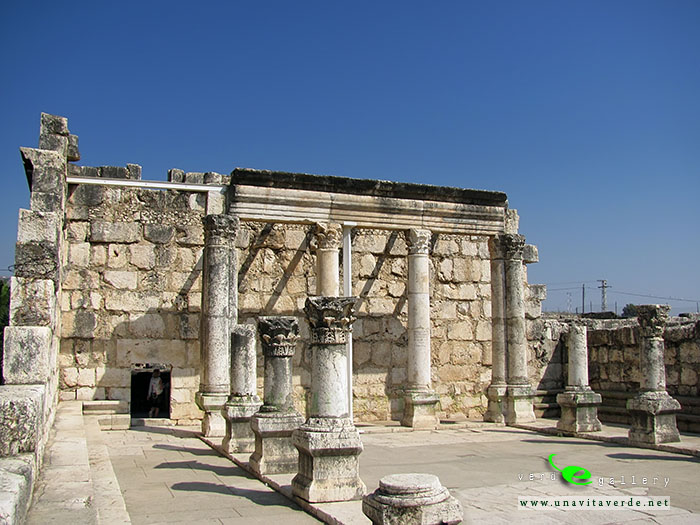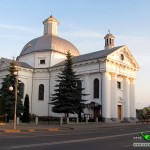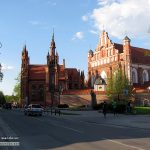Village of Capernaum – Church of the House of Peter
Capernaum is an ancient fishing village on the north shore of the Sea of Galilee in Israel. It’s home to a celebrated Byzantine-era synagogue as well as the house where Jesus healed a paralytic and St. Peter’s mother-in-law.
Capernaum is frequently mentioned in the Gospels and was Jesus’ main base during his Galilean ministry. It is referred to as Jesus’ “own city” (Mt 9:1; Mk 2:1) and a place where he lived (Mt 1:13). He probably chose it simply because it was the home of his first converts, Peter and Andrew (Mk 1:21, 29).
They went to Capernaum, and when the Sabbath came, Jesus went into the synagogue and began to teach. The people were amazed at his teaching, because he taught them as one who had authority, not as the teachers of the law…
As soon as they left the synagogue, they went with James and John to the home of Simon and Andrew. Simon’s mother-in-law was in bed with a fever, and they told Jesus about her. So he went to her, took her hand and helped her up.” (Mark 1:21-22, 29-30)
Many familiar Gospel events occurred in this village. Capernaum is where Jesus first began to preach after the Temptation in the wilderness (Mt 1:12-17) and called Levi from his tax-collector’s booth (Mk 2:13-17). It was while teaching in the synagogue of Capernaum that he said, “Whoever eats my flesh and drinks my blood has eternal life, and I will raise him up at the last day.” (Jn 6:54)
Capernaum is where Jesus healed a centurion’s servant without even seeing him (Mt 8:5-13; Lk 7:1-10), Peter’s mother-in-law (Mt 8:14-15; Mk 1:29-30); the paralytic who was lowered thorugh the roof (Mk 2:1-12), and many others who were brought to him (Mt 8:16-17). And it was Capernaum that Jesus had set out from when he calmed a storm on the Sea of Galilee (Mt 8:23-27).
Jesus was harsh with his adopted home when it proved unrepentent despite his many miracles. “And you, Capernaum, will you be lifted up to the skies? No, you will go down to the depths. If the miracles that were performed in you had been performed in Sodom, it would have remained to this day. But I tell you that it will be more bearable for Sodom on the day of judgment than for you” (Mt 11:23-24).
Capernaum was a Jewish village in the time of the Christ. It was apparently poor, since it was a Gentile centurion that built the community’s synagogue (Luke 7:5). The houses were humble and built of the local black basalt stone.
Christian presence is attested early in Capernaum and the village was predominantly Christian by the 4th century AD. Rabbinic texts from the 4th century imply considerable tension between the Jewish and Christian communities of the town.
Both the church and synagogue were destroyed prior to the Islamic conquest in 638. One possible scenario is that the Persian invasion of 614 gave the Jews the opportunity to act on their resentment of the now-powerful Christian community and demolish the church. In 629, the Byzantine emperor and his troops marched into Palestine, and under this protection the Christians may have destroyed the synagogue.
The synagogue of Capernaum is located just inland from the shore with its facade facing Jerusalem. It has been difficult to date, with scholarly opinion ranging from the 2nd to 5th centuries. It stands on an elevated position, was richly decorated and was built of imported white limestone, which would have contrasted dramatically with the local black basalt of the rest of the village. All of this would have given the building great beauty and status.
What to See? The ruined synagogue and the Greek Orthodox church stand quite close to each other near the shore, with ruins of 1st-to-6th-century houses in between. Also on the place are finely carved stones that belong to the synagogue, and a new Greek Orthodox church nearby.
Around the Greek Orthodox church the remains of the village have not yet been excavated, unlike the synagogue of Capernaum and the buildings around it.
This pictures have been taken on 27 of September, 2011.
This photo gallery is as Israel Travel Photo Guide.













